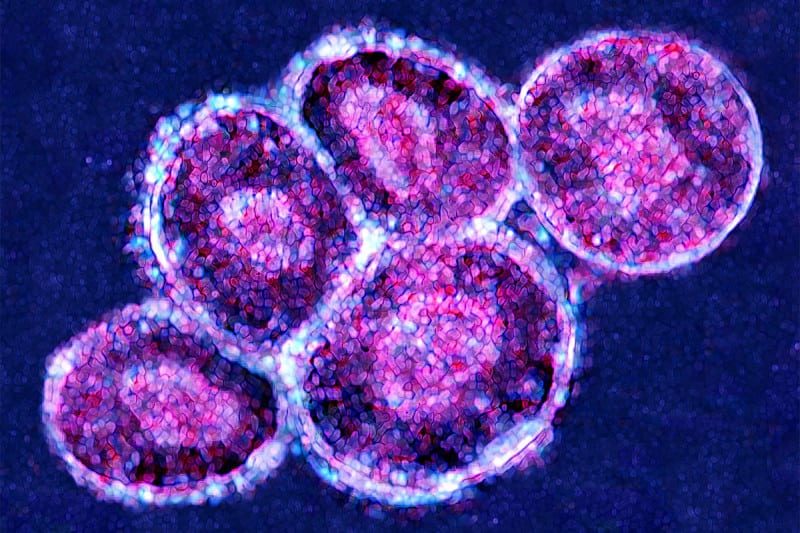
© BSIP SA/Alamy Stock PhotoEmbryonic stem cells can become any type of cell in the body.
Emryonic stem cells could help treat all kinds of disorders, and editing the genomes of these stem cells could make the treatments far more potent. But there might be a catch.
A team at Novartis has found that genome editing kills most human embryonic stem cells - and the ones that survive are more likely to have mutations in a key anticancer gene. Cells with such mutations are, in theory, far more likely to turn cancerous."This is something we need to be aware of and test for," says Florian Merkle at the Wellcome-MRC Cambridge Stem Cell Institute in the UK, who wasn't involved in the work.
Embryonic stem cells (ESCs) are derived from embryos or created by reprogramming adult cells. They can turn into any cell type in the body, so they have potential for treating a range of diseases, from Parkinson's to diabetes. Genome editing could make such therapies even more powerful. For instance, if a person has a disease caused by a specific mutation, ESCs could be derived from their cells in the lab, the mutation corrected and healthy tissues returned to the body.
But when Ajamete Kaykas's team at the Novartis Institutes for Biomedical Research in Boston tried to use the CRISPR gene-editing technique on ESCs, most of the cells died. The researchers found that the deaths were due to a protein called P53 (Nature Medicine, doi.org/cqtc).P53's role is to prevent cancer by triggering cell suicide when it detects dangerous mutations. It appears to have kicked into action because the gene editing process induces mutations by cutting a cell's DNA.
"The stem cells that survive gene editing are more likely to have mutations in a key anticancer gene"
What is worrying is that the cells that survived were far more likely to have mutations in the gene that codes for p53. If gene-edited ESCs with a faulty p53 were turned into rapidly dividing cells like skin cells and implanted in the body, they could acquire even more mutations and turn cancerous. The risk would be lower if ESCs were turned into non-dividing cells such as neurons.Other researchers are surprised by the results. "I'm inclined to believe this study but I still have some questions," says Merkle. In particular, DNA breaks occur in cells all the time, so it's not clear why those made by CRISPR should produce such a strong cell-suicide response in ESCs. Another question is whether this happens in other cell types.
The good news is that we may already have solutions. Biologists have developed advanced forms of CRISPR that don't completely sever DNA strands. "These would not trigger the problem," says Robin Lovell-Badge at the Francis Crick Institute in London.It should also be standard practice to check cells grown in labs for p53 mutations, says Merkle. His team showed last year that such mutations occur surprisingly often even in ESCs that haven't been edited. This could skew research done with the cells into genetic disorders.
No clinical trials involving gene-edited ESCs have begun. A firm called CRISPR Therapeutics plans to treat beta-thalassemia and sickle cell disease by editing each individual's blood stem cells. On 30 May, it announced that this trial had been put on hold by regulators, for reasons that haven't yet been made public.
If hyper-advanced civilizations can be idiots with genetics, then I suspect the idea of circumventing god to grow one's own penis and/or womb is a little premature.